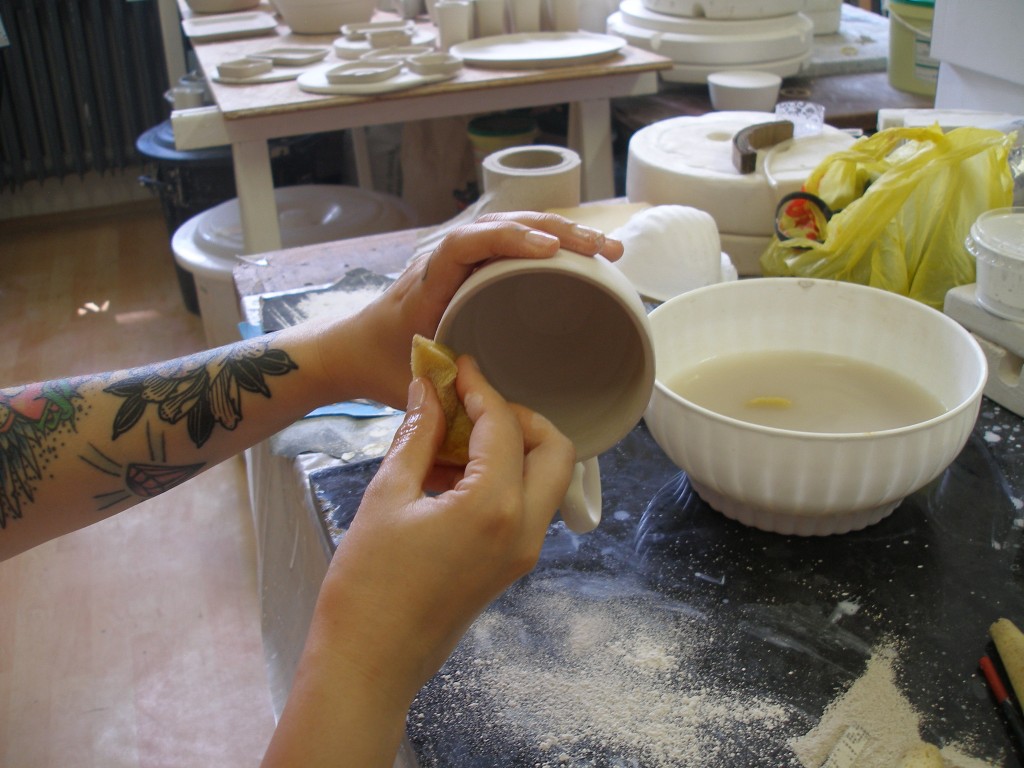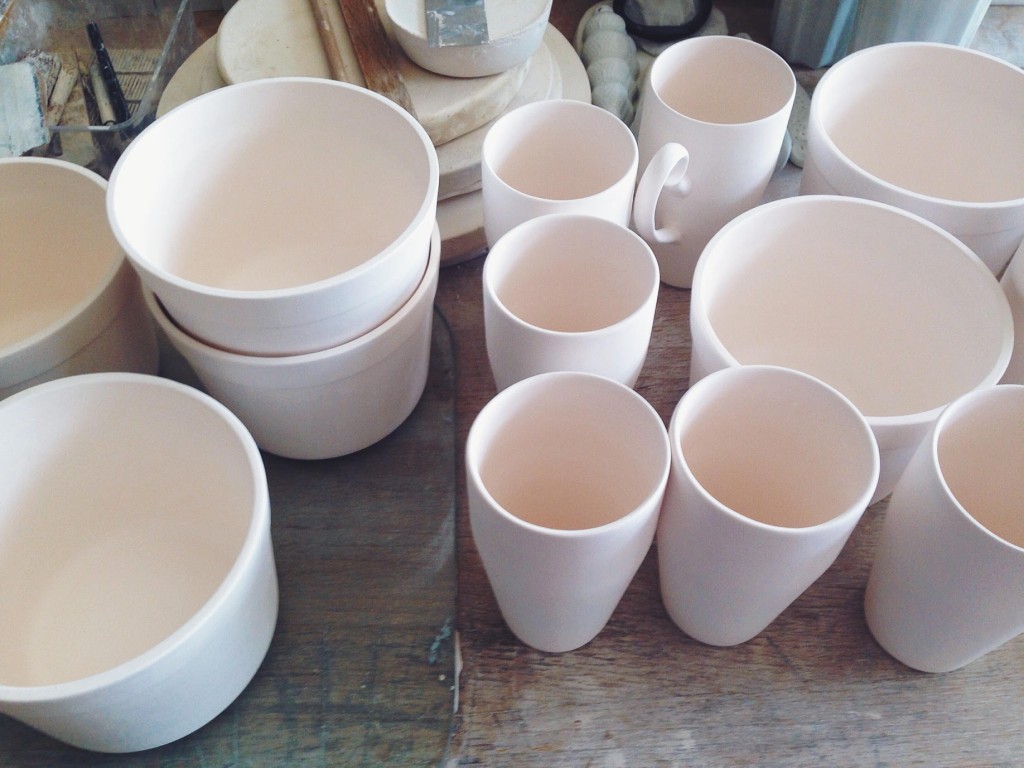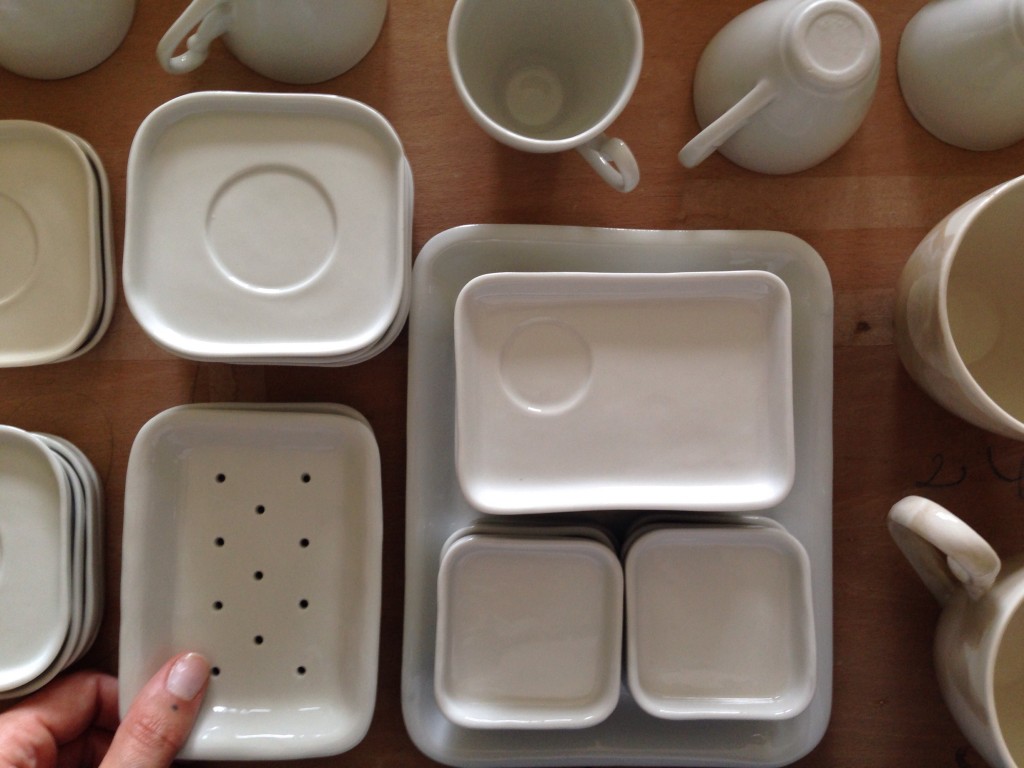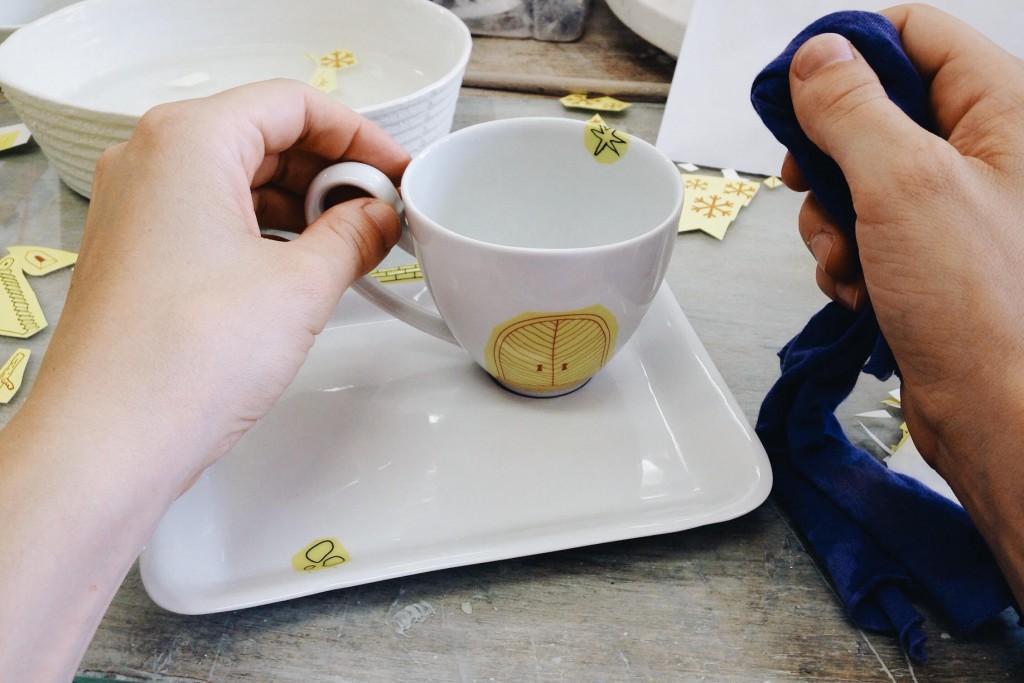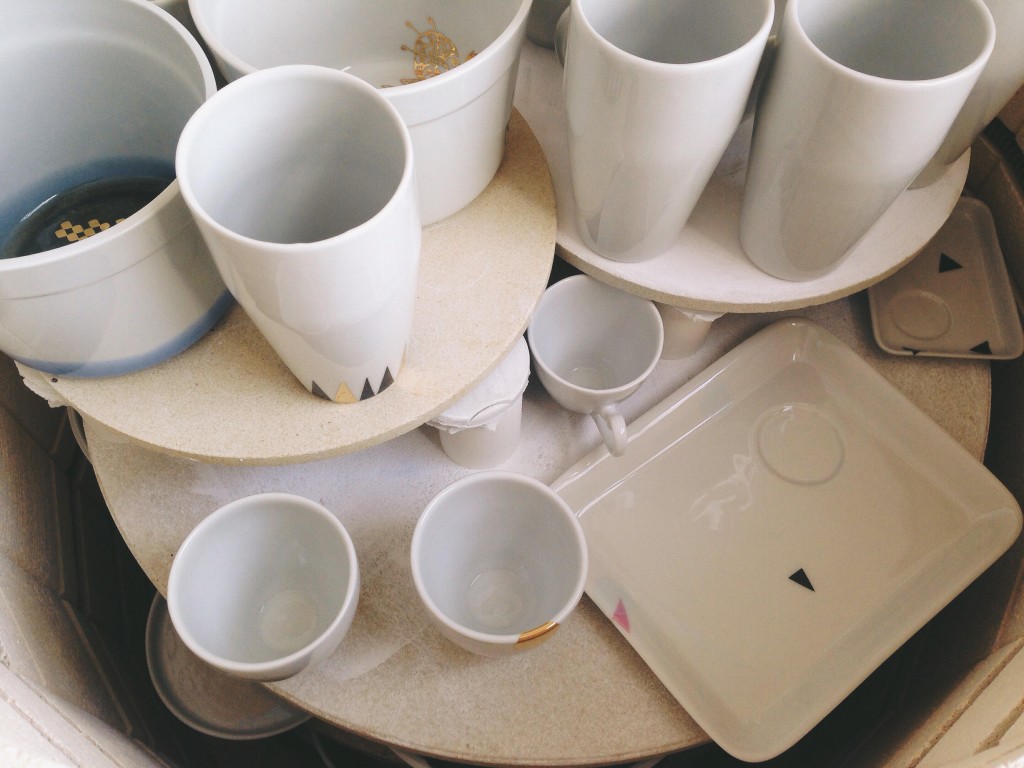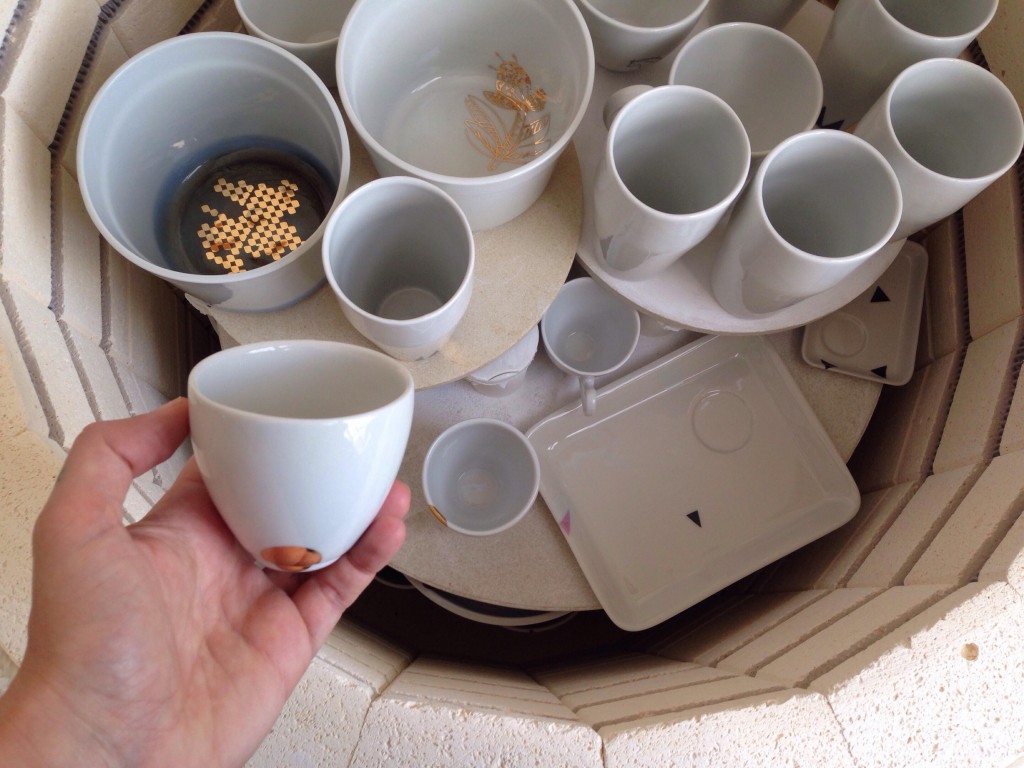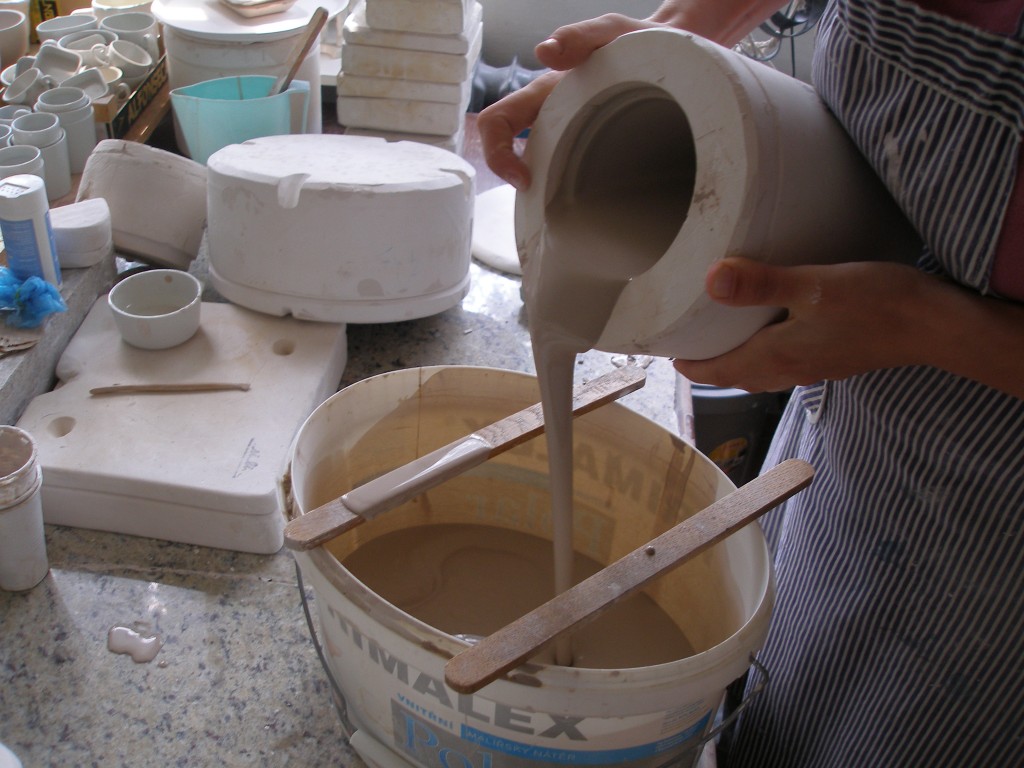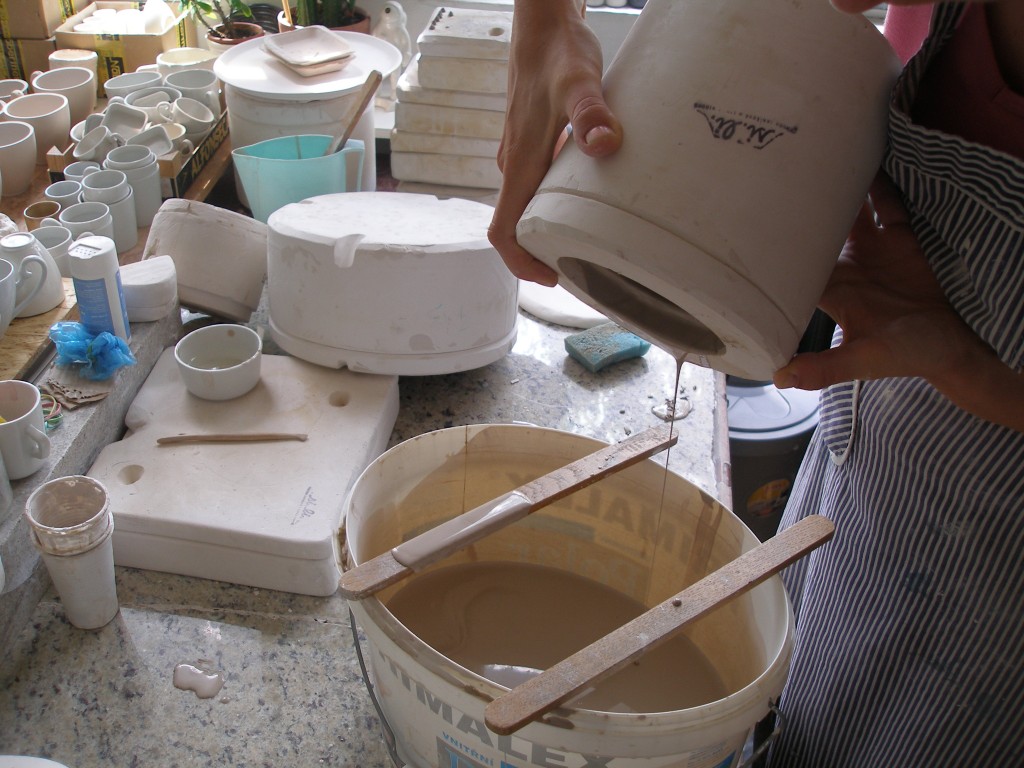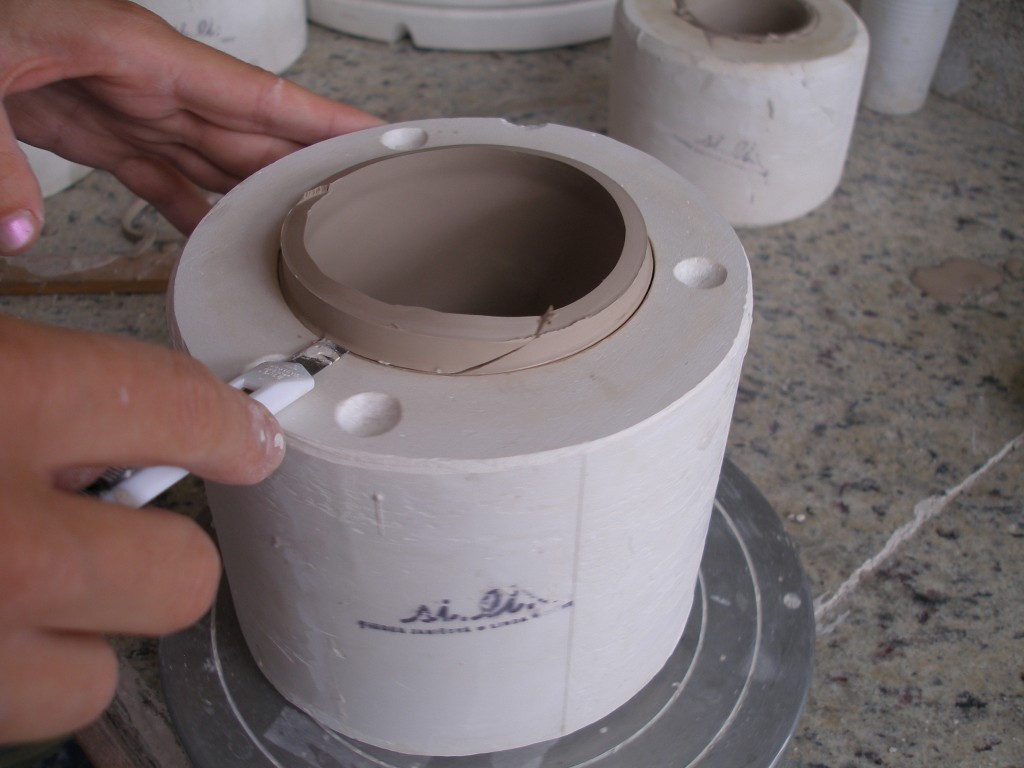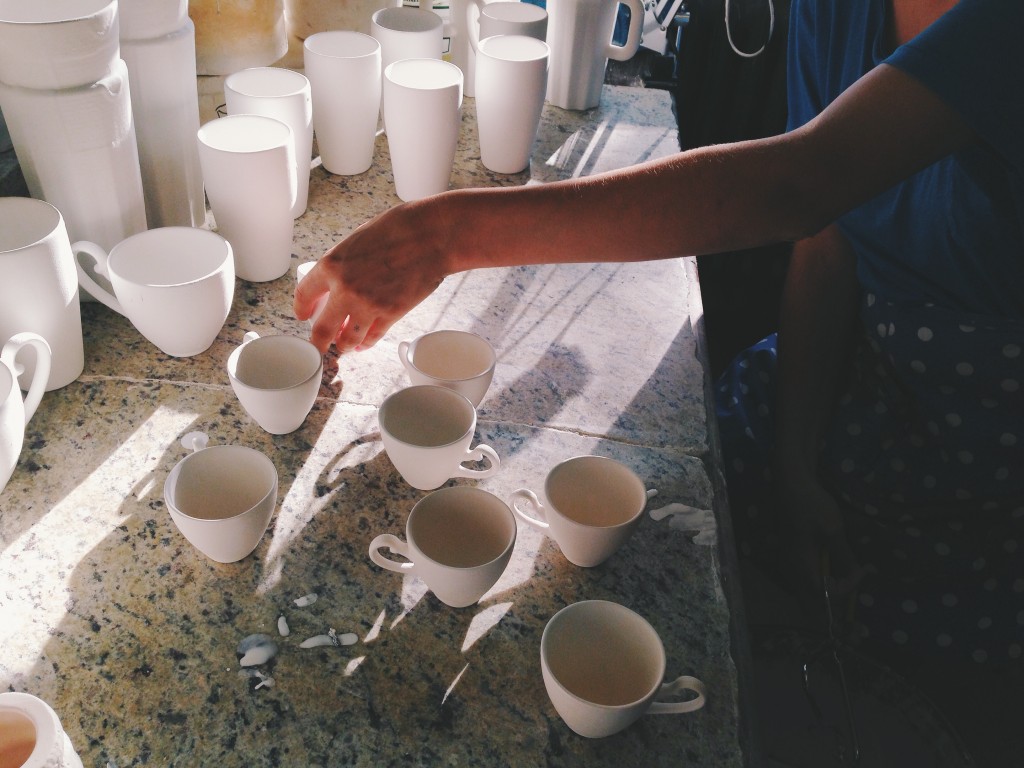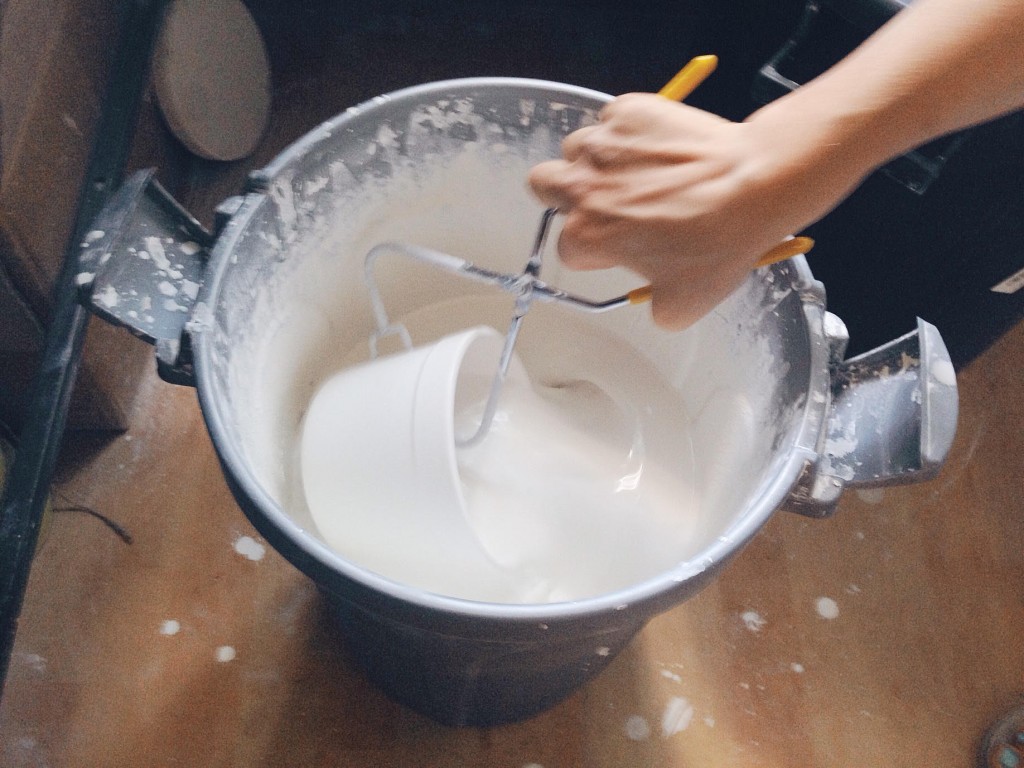It takes a Lot of time and patience to produce our porcelain goods which are made just with our four hands! Here are some snapshots from the making process. Enjoy!
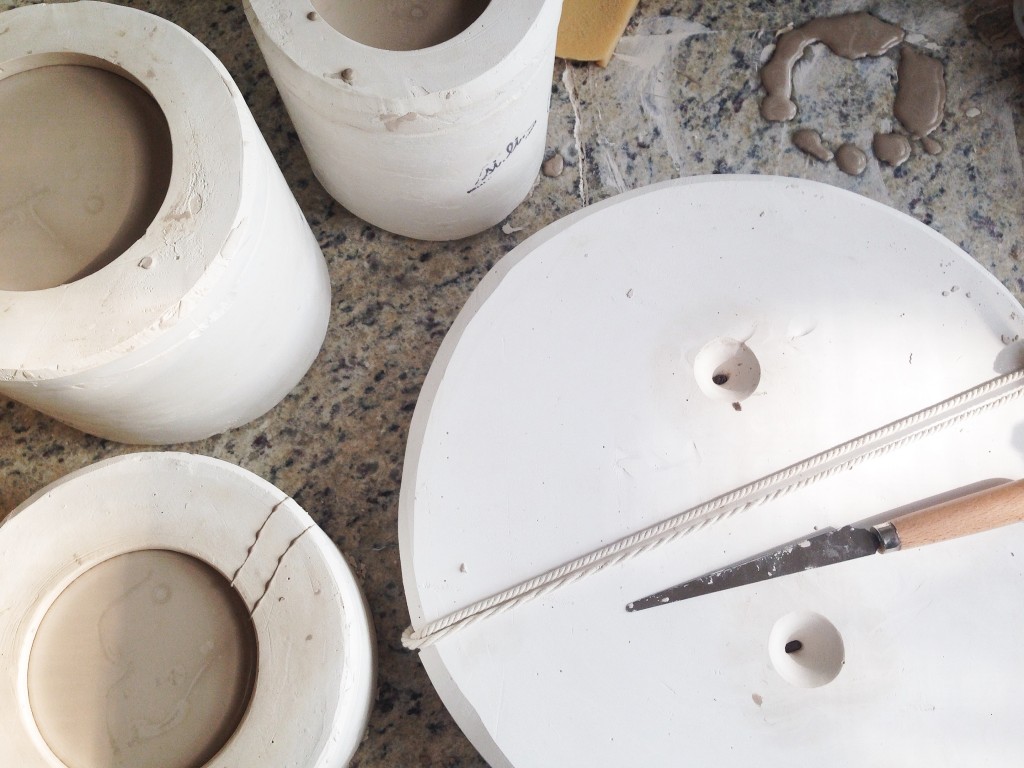 Before finished porcelain piece, there is always an idea. It starts to materialize as a sketch, or computer proposal. When we are sure that this idea is worth to spend a time on, we start to work with material. That is generally plaster. We are producing our own models and plaster molds, which are used for porcelain slip casting. Process of mold making takes sometimes couple of months and it will be a topic of another post in our journal. This time we are focusing on our daily “routine” – process of slip casting, glazing and firing.
Before finished porcelain piece, there is always an idea. It starts to materialize as a sketch, or computer proposal. When we are sure that this idea is worth to spend a time on, we start to work with material. That is generally plaster. We are producing our own models and plaster molds, which are used for porcelain slip casting. Process of mold making takes sometimes couple of months and it will be a topic of another post in our journal. This time we are focusing on our daily “routine” – process of slip casting, glazing and firing.
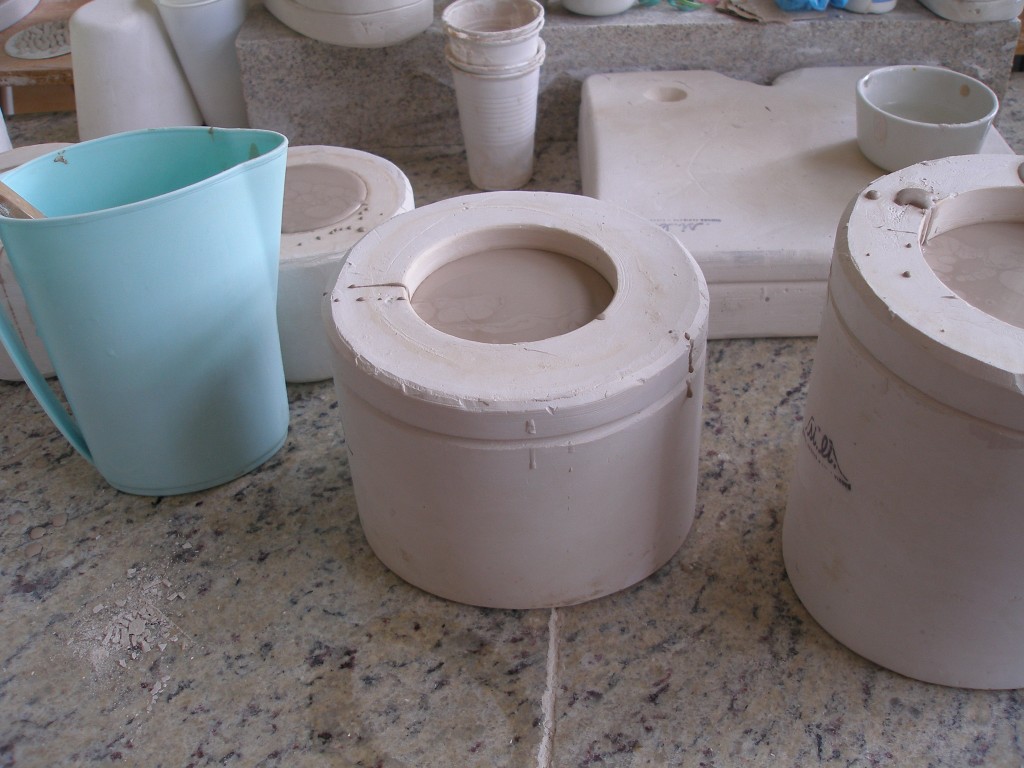 Liquid, high quality Limoges porcelain is poured in to plaster molds. Thickness of a product depends on a time we leave porcelain inside a mold. When spare porcelain is poured outside, cast is left inside of a mold for a couple of more minutes to become more stiffen.
Liquid, high quality Limoges porcelain is poured in to plaster molds. Thickness of a product depends on a time we leave porcelain inside a mold. When spare porcelain is poured outside, cast is left inside of a mold for a couple of more minutes to become more stiffen.
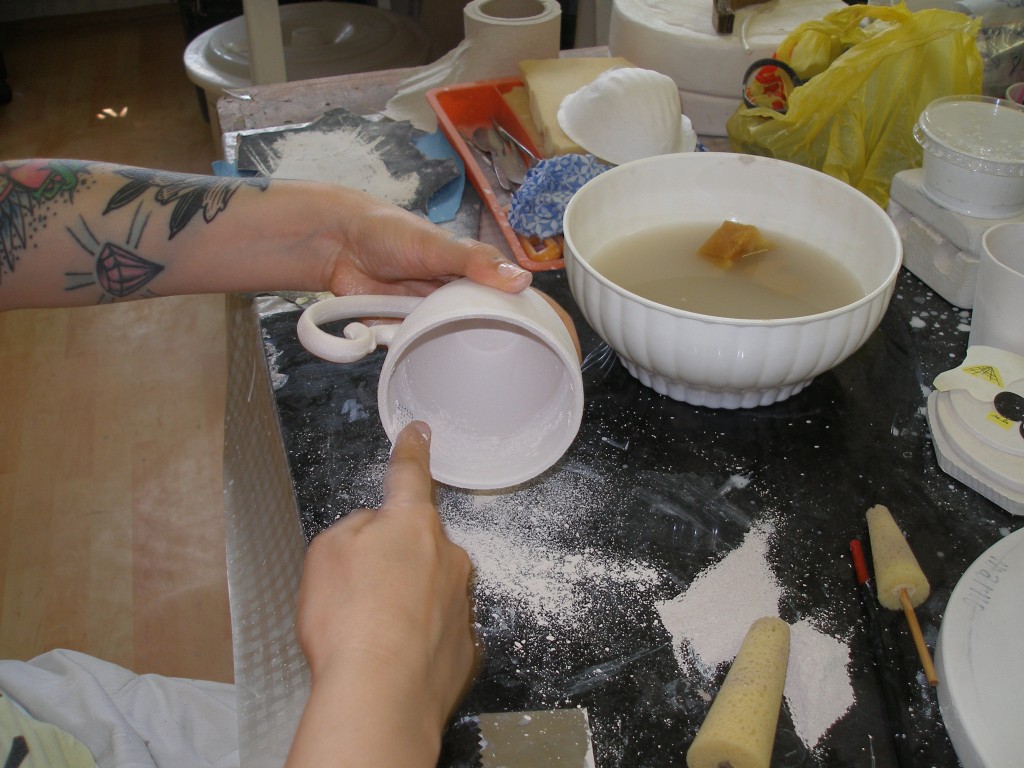 After one or two days, when product is dry enough, it is very important to retouch it throughly and gently to perfection. This is a time when goods are fired for a first time. We called this bisque firing. Range of temperature is between 950 – 1000°C.
After one or two days, when product is dry enough, it is very important to retouch it throughly and gently to perfection. This is a time when goods are fired for a first time. We called this bisque firing. Range of temperature is between 950 – 1000°C.